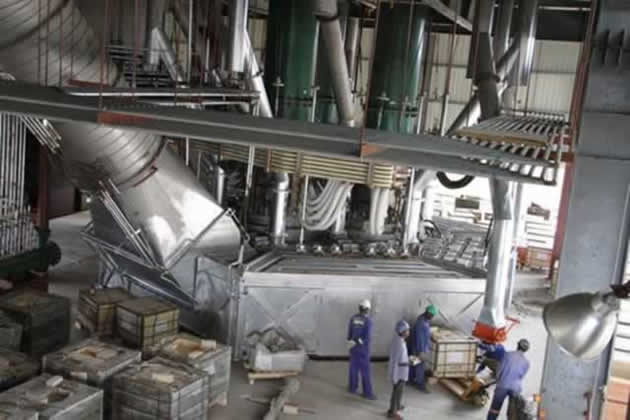Manufacturing sector poised for further growth

Enacy Mapakame
FINANCE and Economic Development Minister Patrick Chinamasa says the manufacturing sector is this year poised for a further boom on the back of a strong agriculture production and regulatory interventions.
The continued implementation of the Statutory Instrument 64 of 2016 which limits the importation of certain goods that can be produced locally is also expected to drive manufacturing sector and other downstream industries.
This is also coupled with Government’s initiatives to improve the business environment through the ease of doing business reforms that should ultimately enhance the local business operating environment thereby attracting new foreign investment.
“In 2017, activity in the sector is expected to improve on account of strong agricultural performance and related value chains, continued implementation of SI-64 of 2016, the use of plastic money and the ongoing doing business reforms to reduce cost structures,” said Minister Chinamasa last week in his Annual Budget Review for 2016 and Outlook for 2017.
Agriculture sector provides an estimated 60 percent of the raw materials needed in the manufacturing sector.
Already, there have been positive results with this year’s strong recovery of agriculture estimated to yield a 21,6 percent growth realisation for 2017, according to Treasury.
Government, under the economic blue print, the Zim-Asset has also been pushing for value addition as one of the clusters identified a key enabler for economic growth.
This is premised on the notion that value added goods enhance industrial activity, job creation and ultimately push economic growth.
“The promotion of value chains, especially those linking agriculture and other extractive sectors to manufacturing, and construction sectors added impetus to revival of the sector.
“The positive impact of Government interventions in support of domestic value addition contributed towards revival of the manufacturing sector.
“This included Statutory Instrument 64 of 2016, domestic financial system export incentive arrangements by the Reserve Bank, as well as supportive duty rebates on imported capital equipment,” said Minister Chinamasa.
Following a years of economic meltdown, local industry heavily downsized operations due to lack of capital for retooling, low foreign direct investment, erratic utility supplies and antiquated machinery.
This resulted in a fall in capacity utilisation and competitiveness of local products, with consumers opting for imports.
But implementation of regulations such as the SI-64 resulted in improvements in capacity utilisation, competitiveness and increased demand for local products.
According to the Confederation of Zimbabwe Industries 2016 Manufacturing Sector Survey Report, capacity utilisastion rose from 34 percent in 2015 to 47 percent in 2016 on the back of increased production spurred by the import restrictions.
Besides the S.I 64, several other instruments have been gazetted removing products from the Open General Import License (OGIL).
These include the SI-18 of 2016 (Pharmaceutical products), SI-19 of 2016 (batteries, floor polish, twine, candles), SI-20 of 2016 (second hand clothing and shoes), and SI-126 of 2014 (plastic packaging, hoses, conveyor belts).
“This arrangement was put in place to allow people to bring in limited quantities of goods for personal use,” said CZI.
According to CZI, several other sub-sectors have registered growth in capacity utilisation.
Yeast industry, which was almost closed rose to about 90 percent capacity utilisation while the biscuit manufacturing sector improved from 35 percent to 75 percent.
Furniture sector’s capacity rose to 70 percent from 30 percent while detergent industry added 30 percentage points to 60 percent.
Tyre manufacturers also increased their capacity utilisation from 30 percent to 50 percent following a ban on second hand tyres.
Pharmaceutical sector, with the exception of CAPS, witnessed a growth from 30 percent to around 60 percent.
CZI further notes companies have also taken advantage of the policy measures to upgrade their machinery and technology to improve their production efficiency.









Comments